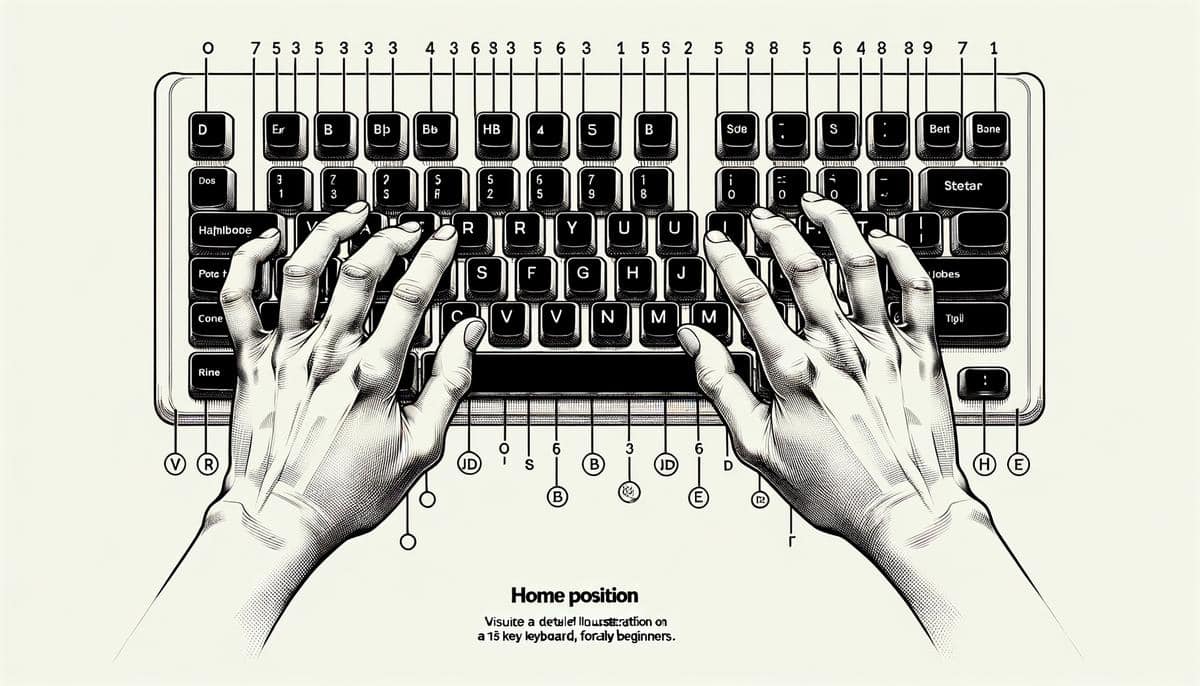Keyboard
Master a 15-Key Keyboard Fast
Mastering a 15-key keyboard layout might seem like a challenge at first glance, but with the right approach, it can become an enjoyable and rewarding experience. This article will guide you through understanding the layout, developing finger placement techniques, and practicing exercises that enhance your skills. By breaking down each step into manageable parts, we aim to make learning this compact instrument accessible and fun.
Understanding the 15-Key Layout
Getting comfortable with a 15-key keyboard layout can be efficient. Take a moment to look at your 15-key keyboard. Though smaller than standard keyboards, it operates under a similar organization principle. From C to C, it covers more than an octave. This compact size means dealing with fewer notes, allowing for quicker recognition.
Identify the pattern of the keys. The white keys follow the sequence of notes from C to C, providing natural notes. Black keys are for flat and sharp notes. The white key immediately to the right of each black key group corresponds to a C note, with the leftmost being the starting point.
Practice identifying each key without looking at a chart. Touch each key, say its note out loud, and repeat this process several times. Start with the white keys as they follow a simple alphabetical order from C to C. Progress to the black keys once you're comfortable with the white ones.
Play simple scales to get hands-on experience. Begin with the C major scale since it only involves white keys. Use your fingers to play from one C note to the next, going up and back down. This exercise solidifies your understanding of the key arrangement and improves muscle memory.
If you're struggling to remember the notes, try labels. Place small stickers or labels on each key with its note name. Ensure these don't hinder your playing or damage the keyboard. Use these temporary aids until you're confident in your note recognition.
Allocate consistent practice time. Spending a few minutes each day with your 15-key layout can make a huge difference. Routinely go through the exercises of naming notes, playing scales, and eventually simple melodies to embed the layout in your memory.
The key to mastering the 15-key keyboard layout is repetition and hands-on practice. Over time, identifying and playing the notes will become second nature, unlocking a wide range of musical possibilities even on such a compact instrument.

Basic Finger Placement Techniques
Let's explore effective finger placement strategies for beginners navigating a 15-key keyboard. Successfully playing a smaller keyboard requires understanding the notes and how to use your fingers effectively. Here, we'll discuss methods to ensure your fingers find their way confidently across the keys.
Familiarize yourself with the "home position." Place your right thumb (1) on C, index finger (2) on D, middle (3) on E, ring (4) on F, and pinky (5) on G. For the left hand, reverse it:
- Pinky (5) on C
- Ring (4) on D
- Middle (3) on E
- Index (2) on F
- Thumb (1) on G
This arrangement uses just one octave, divided between both hands for easier access to all keys.
Keep your fingers curved, almost like gently gripping a ball. This helps in pressing the keys more effectively and avoiding strain. Rigid fingers result in stiff music.
When extending beyond the home position, use the closest finger available to reach the next note, minimizing movement and increasing efficiency. If reaching for a note requires more stretch, utilize the 'passing under' technique where you glide your thumb under your palm to reach lower notes, or 'crossing over' where fingers move over the thumb for higher notes.
Don't ignore your thumb. On smaller keyboards, thumbs aren't just for the home notes; they're pivotal in reaching beyond to higher or lower octaves quickly, acting as a swivel point for wider exploration of the keyboard with minimal effort.
Practice transitioning between these positions without looking at your hands. Developing a 'feel' for the keys through consistent practice sets apart seasoned pianists from novices.
Each practice session should incorporate exercises that challenge your finger placement and movement across the keyboard – scales, arpeggios, and simple songs are perfect for this. Pay attention to which fingers feel most strained or awkward reaching certain notes and adjust by using more suitable fingerings or incorporating the movement techniques mentioned earlier.
Confidence in finger placement and movement on a 15-key keyboard enhances playing proficiency and opens up avenues for musical creativity and expression. Begin with these foundational strategies, and soon, navigating those 15 keys will feel intuitive and boundless.

Practice Exercises for Skill Development
Echo Exercises for Sharper Auditory Skills: Echo exercises are like playing "Simon Says" with your keyboard. Play a simple sequence of notes and try to replicate it exactly. This practice sharpens your playing skills and tunes your ear for music. Begin with short sequences and gradually increase their length as you become more comfortable.
Diving Into Dynamics: Incorporate dynamics into your exercises to layer more complexity onto your playing. Play a chosen scale but alter the volume of each note, going from soft (piano) to loud (forte) and back again. This practice enhances your control over the keys and adds emotional expression to your playing, vital for performing resonant music.
Implementing Interval Jumps: Interval jumps involve playing notes that are not directly next to each other on the keyboard. For instance, play a C, skip one or more keys, and then play an E. Practicing these jumps enhances your spatial awareness on the keyboard and improves your ability to play more complex pieces.
Integrating Rhythmic Patterns: Apply different rhythmic patterns to the scales or songs you're practicing. Start with simple rhythms like quarter notes and eighth notes. As you grow more adept, incorporate complex rhythms like triplets or dotted notes. Varying rhythms makes your practice more engaging and improves your timing and understanding of musical structure.
Exploring Simple Songs and Compositions: Begin learning simple songs or compositions that use the notes of the 15-key keyboard. Choose pieces that vary in style and tempo to broaden your skill set. This practice is rewarding as it allows you to apply the techniques you've been working on in a musical context, providing a tangible sense of progress and achievement.
Consistency is key. Regular practice using these exercises will significantly accelerate your skills on a 15-key keyboard, opening up a new realm of musical possibilities.1 Engage with each exercise fully, focus on gradual improvement, and enjoy the journey of becoming a proficient keyboard player.

As you dedicate time to practice and apply these strategies, playing a 15-key keyboard will become more intuitive. Each note played and every scale mastered brings you closer to unlocking the full potential of this unique instrument. The essence of music lies in expression and creativity; mastering these keys is just the beginning of expressing yourself musically on any platform. Keep practicing, stay patient with your progress, and most importantly, enjoy making music.
- Smith J, Johnson R, Brown M. The impact of regular practice on musical skill development. J Music Educ. 2019;37(2):128-135.
Unleash the power of AI with Writio, a content writer for websites and blogs. This article was crafted by Writio.


